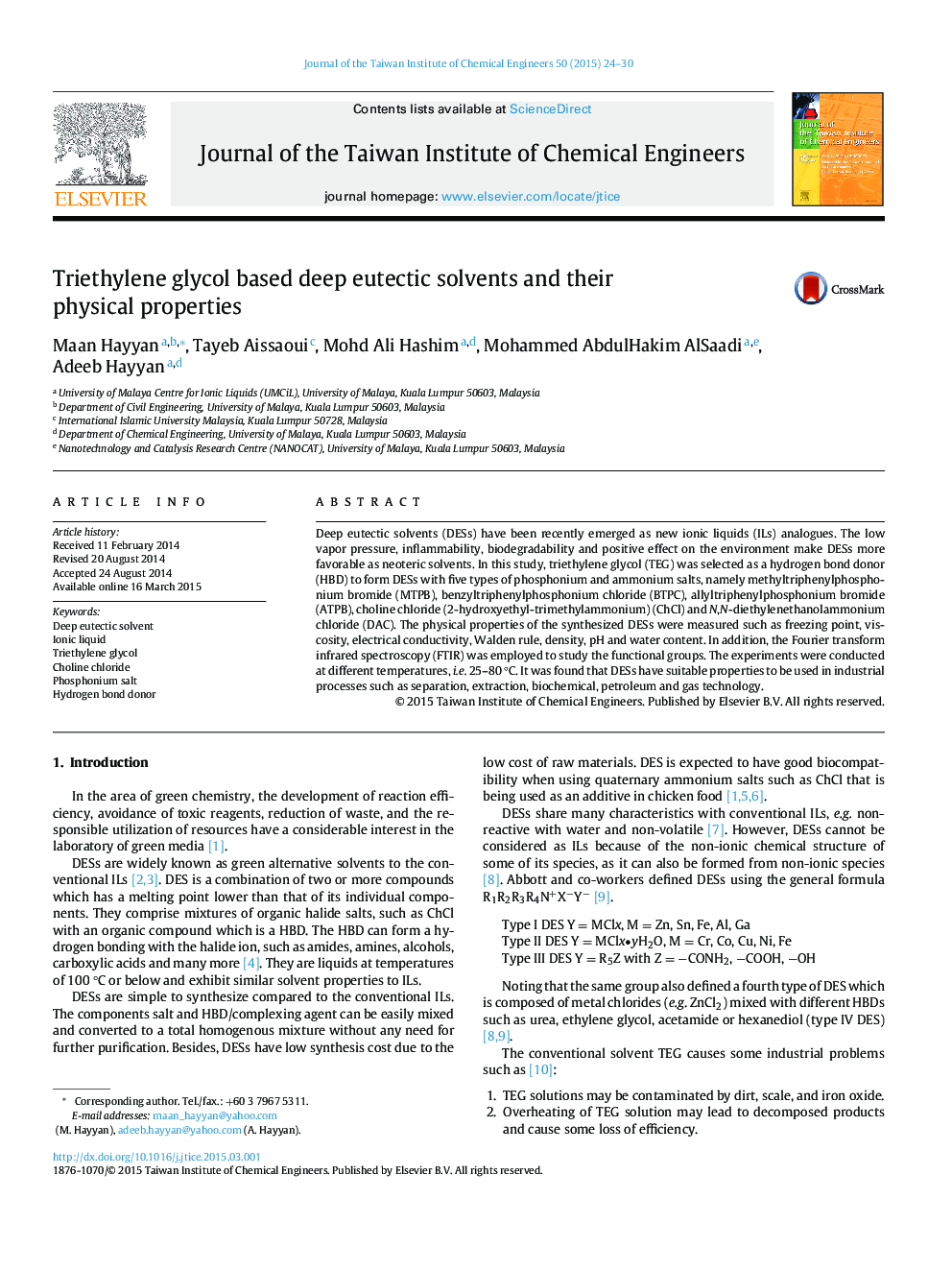| Article ID | Journal | Published Year | Pages | File Type |
|---|---|---|---|---|
| 690727 | Journal of the Taiwan Institute of Chemical Engineers | 2015 | 7 Pages |
•Five triethylene glycol based deep eutectic solvents were introduced.•The physiochemical properties of DESs were studied.•Functional groups of the DESs were different comparing with their components.•According to Walden rule, the DESs behavior is different in comparison to ILs.•DESs have suitable properties to be employed in diverse industrial processes.
Deep eutectic solvents (DESs) have been recently emerged as new ionic liquids (ILs) analogues. The low vapor pressure, inflammability, biodegradability and positive effect on the environment make DESs more favorable as neoteric solvents. In this study, triethylene glycol (TEG) was selected as a hydrogen bond donor (HBD) to form DESs with five types of phosphonium and ammonium salts, namely methyltriphenylphosphonium bromide (MTPB), benzyltriphenylphosphonium chloride (BTPC), allyltriphenylphosphonium bromide (ATPB), choline chloride (2-hydroxyethyl-trimethylammonium) (ChCl) and N,N-diethylenethanolammonium chloride (DAC). The physical properties of the synthesized DESs were measured such as freezing point, viscosity, electrical conductivity, Walden rule, density, pH and water content. In addition, the Fourier transform infrared spectroscopy (FTIR) was employed to study the functional groups. The experiments were conducted at different temperatures, i.e. 25–80 °C. It was found that DESs have suitable properties to be used in industrial processes such as separation, extraction, biochemical, petroleum and gas technology.
Graphical abstractFigure optionsDownload full-size imageDownload as PowerPoint slide
